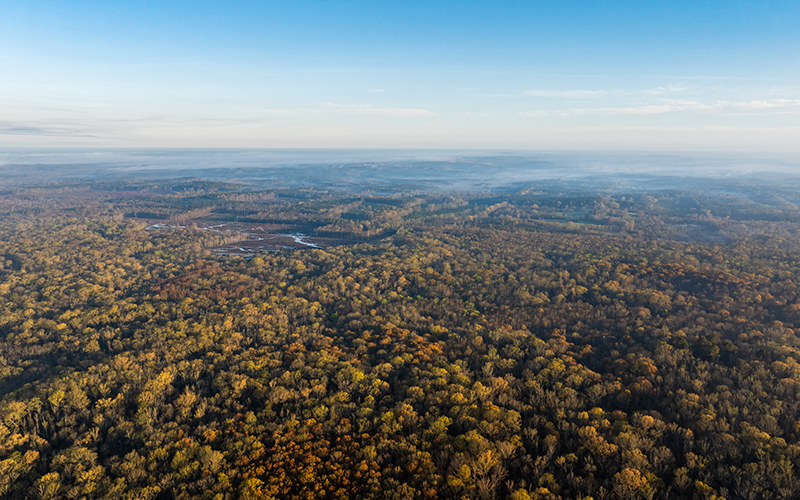About
Sustainable ASLA
 ASLA 2025 Carbon Offset Partner: National Indian Carbon Coalition / Tribal lands of the Mississippi Band of Choctaw Indians, Mississippi / © Stephen Taglieri, courtesy of National Indian Carbon Coalition
ASLA 2025 Carbon Offset Partner: National Indian Carbon Coalition / Tribal lands of the Mississippi Band of Choctaw Indians, Mississippi / © Stephen Taglieri, courtesy of National Indian Carbon Coalition ASLA is committed to being leaders on sustainability, providing greater benefits to the communities with which we engage, and further reducing our climate, water, and waste impacts.
In our nation's capital, ASLA is building on a legacy of positive contributions to the people of the District of Columbia through the ASLA Center of Landscape Architecture. Our 100% wind-powered, LEED Platinum, and WELL Gold-certified headquarters is a model for sustainable workplaces. But we aim to do better through annual sustainability assessments and improvements.
Through our annual Conference on Landscape Architecture, ASLA seeks to provide greater environmental and social benefits to the landscape architecture, vendor, and Conference host communities while rapidly reducing our collective impacts.
The ASLA Strategic Plan, released in 2021, committed to reducing the greenhouse gas emissions from our headquarters operations and conference by 20 percent by 2024. These goals have been achieved. In our ambitious Climate & Biodiversity Action Plan, which was released in October 2025, ASLA reiterated the commitment made through its first Climate Action Plan, released in 2022, to achieve zero
emissions in our operations and conference by 2040.
Through its conference and business operations, ASLA seeks to advance the four key goals of the ASLA Climate & Biodiversity Action Plan:
- Climate: Scale up climate positive approaches
- Biodiversity: Protect, conserve, restore, enhance and manage
- Equity: Amplify the power of people and communities
- Advocacy: Advance climate and biodiversity action through leadership and engagement
ASLA has also committed to conducting annual assessments of its conference and business operations and making them publicly available. Assessments may be updated based on the latest data, science, and regulations.
We will use our own journey to further improve our social and
environmental performance as an educational opportunity for members and
the communities with which we partner.
Explore impact assessments:
Support ASLA